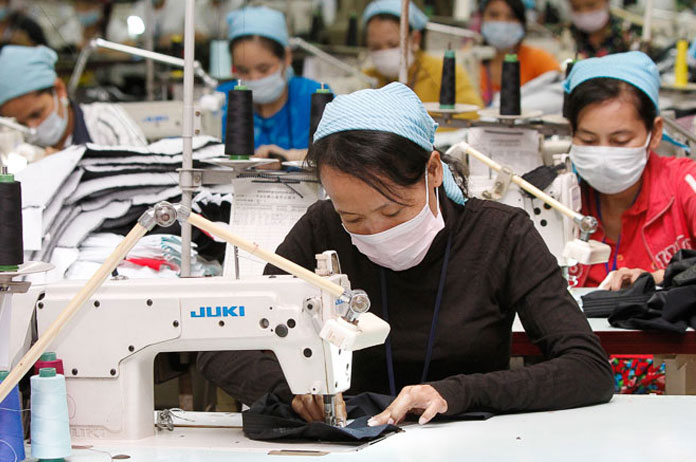Cambodia’s Trade Reforms Praised

Canada on Tuesday urged the Cambodian government to continue its reforms to facilitate trade and investment, particularly in the garment sector. Donica Pottie, the Canadian ambassador to Cambodia, made the call when she paid a courtesy visit to Commerce Secretary of State Ok Boung at the Ministry of Commerce.
Pottie commended Cambodia for its trade reforms and highlighted the importance of the kingdom’s exports to Canada. “We requested the Royal Government of Cambodia to continue its good reforms in advancing trade and investment climates, lower-cost production, higher-quality factory management, smoother documentation, and more simplified export procedures,” she said.
Pottie said she hoped to see a bilateral forum for bringing together Canadian importers and Cambodian exporters, especially in the garment sector. Last year, the Cambodia’s garment and footwear exports rose by 7.2 percent to $7.3 billion, up from $6.8 billion in 2015. In 2016, Canada absorbed nearly 8 percent of Cambodia’s garment and footwear exports, up from 7.5 per cent in 2015.
Ok Boung welcomed Pottie’s comments and said trade reforms were on track with the Ministry of Commerce playing a big role. “There are progressive reforms undertaken by the Ministry of Commerce and they include digitialisation of procedures to obtain certificates of origin and the implementation of trade facilitation agreements,” he said.
Ok Boung said previously it took two weeks to obtain a certificate of origin but now with digitalisation, a certificate of origin could be issued in two days.
The Garment Manufacturers Association in Cambodia (GMAC) also welcomed the trade reforms that were in place, but said more could be done to help facilitate exports.
“GMAC confirms the reform efforts by the Ministry of Commerce. We appreciate the simplification of procedures and modernisation of various applications, specifically the online application for the certificate of origin,” Kaing Monika, GMAC deputy secretary-general, said. “The online system is a way to cut cost and save time. However in terms of a timeframe, it is still a challenge,” he added.
Monika said it still took at least five days to get a certificate of origin and exporters had to go through several levels in the bureaucracy before getting a final approval. “It is also important to do away with export management fees and Camcontrol charges. They just add on to the high import-export costs,” he said.